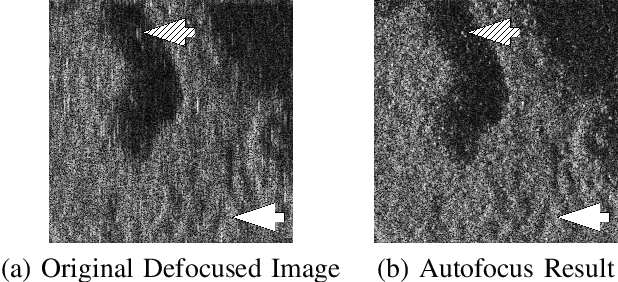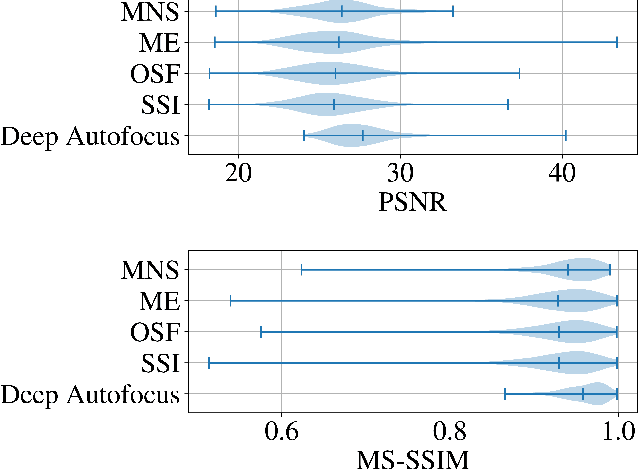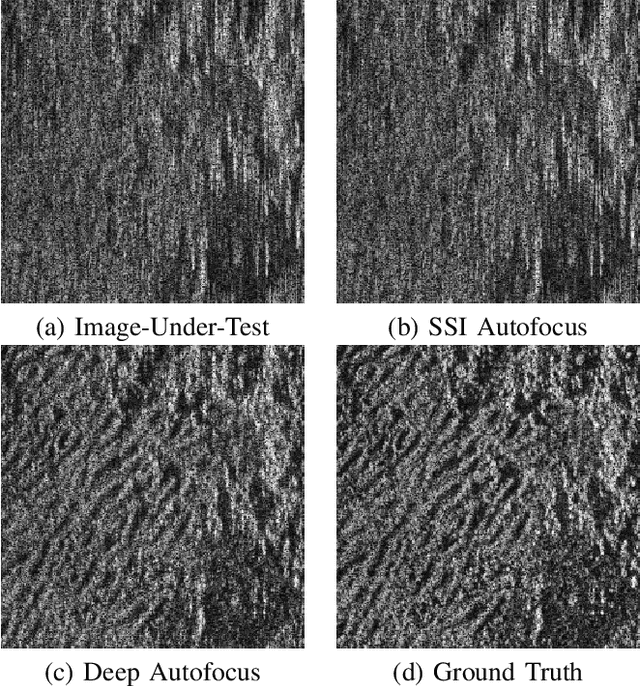Real-Time, Deep Synthetic Aperture Sonar (SAS) Autofocus
Paper and Code
Mar 18, 2021



Synthetic aperture sonar (SAS) requires precise time-of-flight measurements of the transmitted/received waveform to produce well-focused imagery. It is not uncommon for errors in these measurements to be present resulting in image defocusing. To overcome this, an \emph{autofocus} algorithm is employed as a post-processing step after image reconstruction to improve image focus. A particular class of these algorithms can be framed as a sharpness/contrast metric-based optimization. To improve convergence, a hand-crafted weighting function to remove "bad" areas of the image is sometimes applied to the image-under-test before the optimization procedure. Additionally, dozens of iterations are necessary for convergence which is a large compute burden for low size, weight, and power (SWaP) systems. We propose a deep learning technique to overcome these limitations and implicitly learn the weighting function in a data-driven manner. Our proposed method, which we call Deep Autofocus, uses features from the single-look-complex (SLC) to estimate the phase correction which is applied in $k$-space. Furthermore, we train our algorithm on batches of training imagery so that during deployment, only a single iteration of our method is sufficient to autofocus. We show results demonstrating the robustness of our technique by comparing our results to four commonly used image sharpness metrics. Our results demonstrate Deep Autofocus can produce imagery perceptually better than common iterative techniques but at a lower computational cost. We conclude that Deep Autofocus can provide a more favorable cost-quality trade-off than alternatives with significant potential of future research.
 Add to Chrome
Add to Chrome Add to Firefox
Add to Firefox Add to Edge
Add to Edge